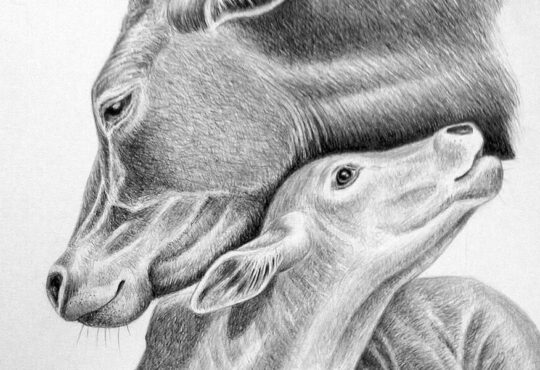Master the Art of Human Drawings: Unlocking the Power of Details
Drawing the human form is a captivating and masterful skill that has intrigued artists and viewers for centuries. Whether you’re a seasoned artist or a beginner, adding details to your human drawings is a crucial skill that can elevate your artwork to new heights.
The intricacies of the human body and its myriad expressions present both challenges and opportunities for artists to showcase their technical prowess and artistic vision.
In this comprehensive guide, we will explore various techniques and approaches to help you master the art of adding details in human drawings.
By delving into anatomy, proportion, texture, and expression, you’ll unlock the power to breathe life into your artistic creations.
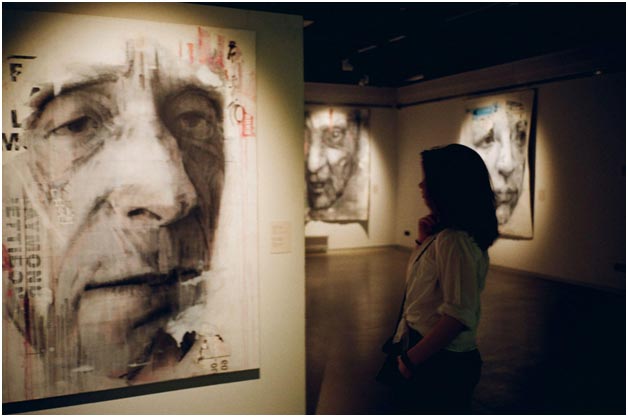
1. Understanding Human Anatomy and Proportions
The foundation of creating realistic human drawings lies in understanding the intricate structure of the human body. Familiarize yourself with the skeletal framework, major muscle groups, and the relationships between different body parts.
By grasping the concept of proportions, you can ensure that your drawings are anatomically accurate. Practice sketching basic figures and gradually progress to more complex poses, paying attention to the subtle nuances of body proportions.
For instance, drawing hair is crucial. So, you might opt for a hair drawing tutorial to grasp the idea of a proportionate figure based on human anatomy as well as outer features.
2. Capturing Facial Expressions
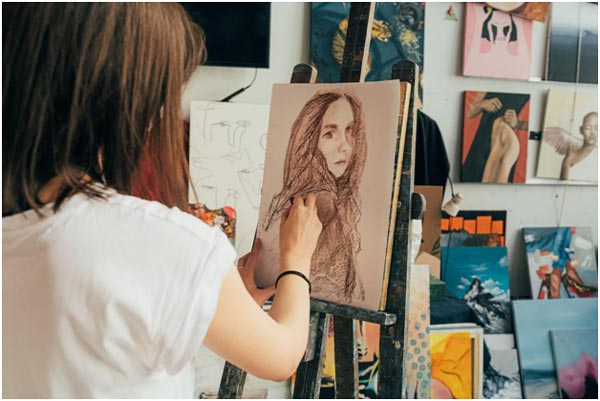
The human face is considered a canvas of emotions. Mastering the ability to depict various expressions adds depth and character to your drawings. So, study the underlying facial muscles and their role in conveying emotions.
Try observing people around you and pay attention to the minute details that define each expression. Experiment with different techniques, such as shading, line work, and highlighting, to accurately capture the nuances of emotions on the faces of your subjects.
3. Conveying Texture and Surface Details
Adding texture and surface details is essential for creating a lifelike quality in your human drawings. Whether it’s the softness of skin, the flow of hair, or the roughness of clothing, textures contribute to the overall realism and tactile appeal of your artwork.
Study different materials and experiment with various techniques, such as cross-hatching, stippling, or blending, to convey textures convincingly. Pay close attention to light and shadow to enhance the three-dimensional quality of your drawings.
4. Enhancing Depth and Perspective
Understanding perspective is crucial for creating a sense of depth and spatial relationships in your human drawings. Use techniques such as foreshortening and overlapping to convey the illusion of distance and depth.
Experiment with different viewpoints and angles to add dynamism and visual interest to your compositions. Incorporate elements such as foreground, middle ground, and background to create a sense of depth and dimensionality.
5. Incorporating Fine Details and Refining your Art
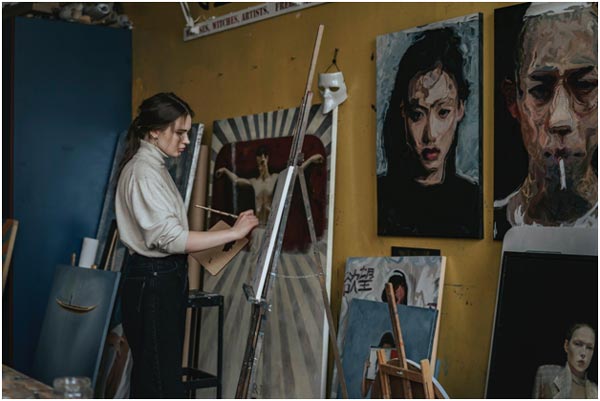
The final stage of adding details involves refining your drawing by focusing on subtle nuances and fine details. Pay attention to small elements like wrinkles, creases, and individual strands of hair to enhance the realism of your artwork.
Use a variety of tools, such as fine-tipped pens or brushes, to add precise and intricate details. Remember to step back and assess your work regularly to ensure that the details harmonize with the overall composition.
6. Utilizing Light and Shadow
Light and shadow play a crucial role in adding depth and dimension to human drawings. Understanding the interplay between light and form is essential for creating realistic and dynamic artwork.
Study how light interacts with different facial features and body contours, and practice shading techniques to accurately represent the subtle variations in tones.
Experiment with different light sources, such as natural light or artificial lighting, to explore the dramatic effects they can have on your drawings. By mastering the art of light and shadow, you can bring a sense of realism and volume to your human figures.
7. Adding Clothing and Drapery
Clothing adds an additional layer of complexity to human drawings, as it interacts with the body’s contours and movements. To accurately depict clothing, study how fabric folds and drapes under various circumstances.
Observe how different materials behave and experiment with different techniques, such as cross-hatching or stippling, to capture the texture and flow of the fabric.
Pay attention to the way clothing clings, wrinkles, or billows, as these details contribute to the overall realism of your drawings. Remember to consider the body’s underlying anatomy when positioning clothing, ensuring that it adheres to the form beneath.
8. Expressing Emotion through Gestures
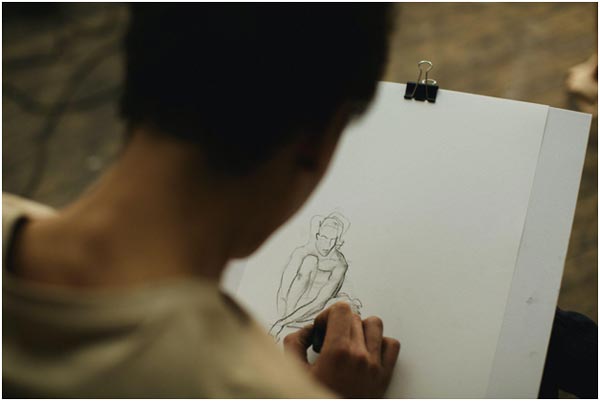
Beyond facial expressions, the human body itself can convey a myriad of emotions through gestures and poses. The angle of the shoulders, the tilt of the head, or the positioning of the limbs can all communicate a range of feelings and moods.
Maintaining these details is a reliable way of creating beautiful realistic artworks of human figures. So, study body language and observe people in different situations to understand how emotions manifest in their physicality. Learn to experiment with various poses and gestures to capture the essence of specific emotions or narratives in your drawings.
A well-executed gesture can add a powerful layer of storytelling to your artwork and evoke a strong emotional response from viewers.
How Many Types of Human Drawing Are There?
Human drawings have been celebrated throughout the ages. Thus types and nature of human drawing have seen tons of variations. And there are various types of human drawing that artists can explore and experiment with.
Here is a brief overview of eight common types:
1. Realistic Drawing: Realistic human drawing aims to capture the human form with meticulous detail and accuracy. Artists focus on achieving lifelike proportions, capturing intricate facial features, and rendering textures with precision.
This style often requires a strong understanding of anatomy, shading techniques, and observational skills.
2. Portrait Drawing: Portrait drawing focuses on capturing the likeness and personality of an individual. Artists pay close attention to facial features, expressions, and unique characteristics that make each person distinct.
Portrait drawing can be done in various styles, ranging from highly realistic to more expressive or abstract interpretations.
3. Gesture Drawing: Gesture drawing emphasizes capturing the overall movement, energy, and essence of the human figure in a short amount of time.
Artists work quickly, using loose and expressive lines to convey the gesture or pose of the model. This type of drawing is often done in timed sessions and helps artists develop their observational skills and ability to capture the essence of a pose.
4. Figure Drawing: Figure drawing encompasses the drawing of the human body in various poses and positions. Artists explore the human form in motion, considering the proportions, balance, and foreshortening that occur in different poses.
Figure drawing is commonly practiced in life drawing sessions or with the use of reference materials.
5. Caricature: Caricature involves exaggerating or distorting certain features or characteristics of a person to create a humorous or satirical representation.
Artists often emphasize distinctive facial features or exaggerate physical attributes to capture the essence of the subject’s personality in a playful and exaggerated manner.
6. Concept Art: Concept art involves creating visual representations of characters, creatures, or environments for various forms of media, such as video games, films, or animation.
Artists combine their knowledge of human anatomy with imagination and storytelling to develop unique and visually compelling concepts.
7. Fashion Illustration: Fashion illustration focuses on portraying clothing and fashion designs on the human figure. Artists showcase the flow, texture, and movement of garments while maintaining the proportions and pose of the figure.
This type of drawing often emphasizes style, elegance, and conveying a specific mood or narrative.
8. Expressive Drawing: Expressive drawing explores emotions, moods, or psychological states through the depiction of the human form.
Artists use various techniques, such as bold lines, abstraction, or unconventional use of color, to convey feelings and create a sense of depth and intensity in their artwork.
These are just a few examples of the types of human drawing that artists can explore.
Each type offers its own unique challenges and opportunities for creative expression, allowing artists to develop their skills, experiment with different styles, and communicate their ideas through the depiction of the human form.
Conclusion
So, here’s how you must learn to master your human drawing skills to come up with the best art pieces. As mentioned earlier, it’s all about working with the lines, expressions, colors, lights, and emotions.
Furthermore, draping clothes around your art figures also entails complex skills and practices. These aspects not only enhance the visual appeal of your artwork but also deepen the connection between your subjects and the audience.
Remember, artistic growth is an ongoing process. And mastering the art of adding details in human drawings requires dedication and continuous practice.
Author’s Bio
Lisa Galyon
Lisa Galyon is a creative individual who is obsessed with everything that stimulates her imagination. Besides being a writer, she is also a great artist, fascinated by colors, art forms, and makeup. A mother of a toddler and puppies, she is also an avid reader. She often confides herself in painting and reading as forms of relaxation.







